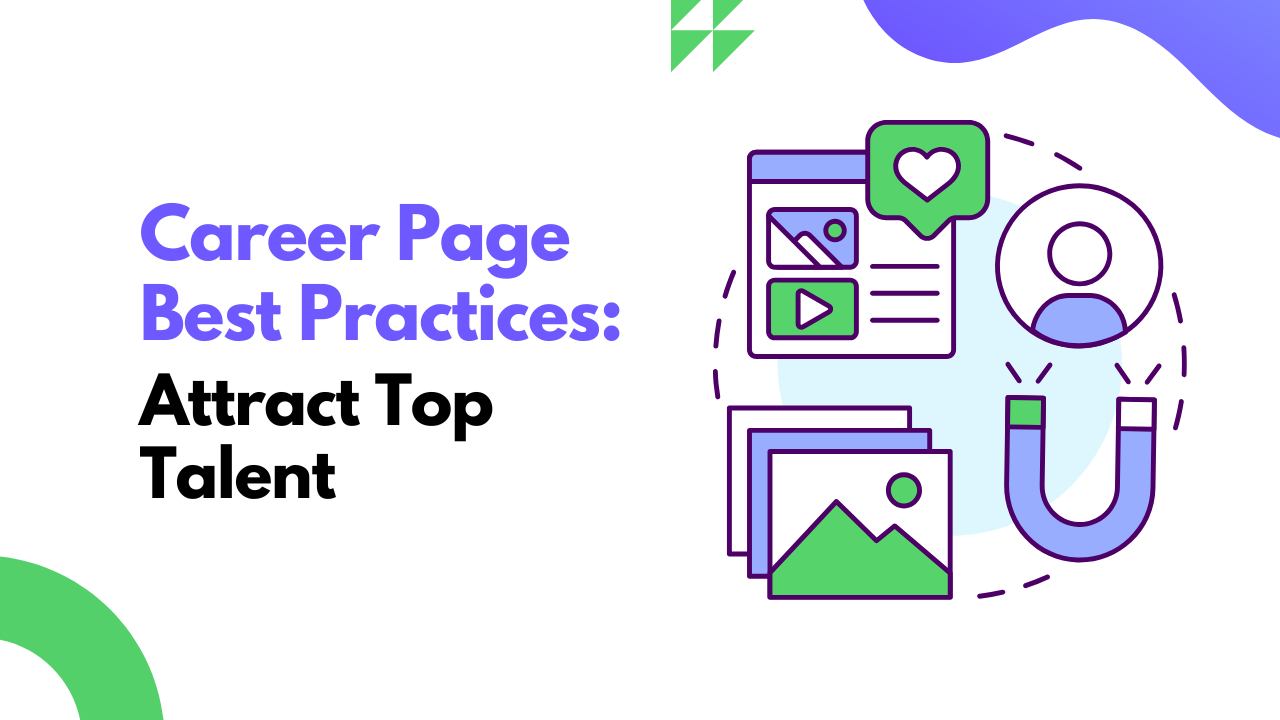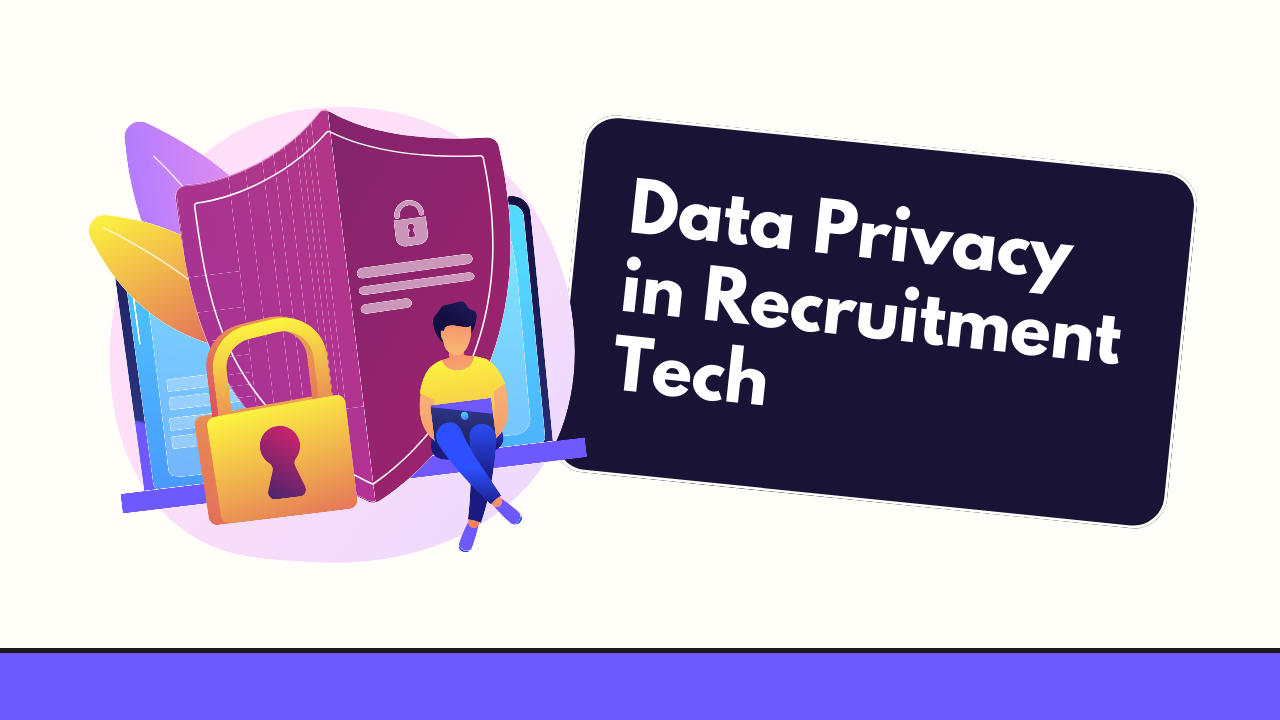In today’s fiercely competitive job market, attracting top-tier talent isn’t just an advantage—it’s a necessity. Your career page is the digital gateway to your company culture and open positions, acting as the first impression for potential candidates. A poorly crafted career page can send promising applicants running, while a well-optimized, engaging one can significantly elevate your recruitment efforts.
This post explores career page best practices, offering actionable strategies to transform your career page from a static job listing into a dynamic talent magnet that draws in the best and brightest. We’ll cover crucial elements like user experience (UX), search engine optimization (SEO), compelling content creation, and performance measurement to ensure your career page becomes a powerful engine for recruitment success.
First Impressions Matter: Designing an Engaging Career Page
In today’s digital age, your career page is often the first impression a potential candidate has of your company. It’s not just a list of open positions; it’s a dynamic platform showcasing your employer brand, culture, and values. A well-designed career page acts as a powerful magnet, attracting top talent and setting the stage for a positive candidate experience. Let’s explore the key elements of crafting a career page that captivates and converts.
Intuitive Navigation and Mobile Optimization
Navigating your career page should be a breeze for potential candidates. A clean, user-friendly layout is paramount. Think clear sections, logical information hierarchy, and prominent search functionality. Avoid cluttered designs and complex navigation menus that can frustrate job seekers.
Furthermore, mobile optimization is no longer optional—it’s essential. With a significant portion of job seekers using mobile devices, your career page must offer a seamless experience across all platforms. Ensure your page is responsive, adjusting flawlessly to different screen sizes and offering intuitive touch controls. A positive mobile experience can significantly impact application completion rates.
Visually Appealing Design and Branding Consistency
Visuals play a pivotal role in capturing attention and conveying your company’s personality. High-quality images and videos showcasing your workplace, team interactions, and company events can breathe life into your career page. Use visuals to tell your story and create an emotional connection with potential candidates.
Maintaining branding consistency with your main website is crucial for a cohesive brand experience. Use consistent logos, color palettes, and fonts. This reinforces your brand identity and fosters trust among candidates. A cohesive visual identity contributes to a more professional and memorable experience.
Accessibility for All Candidates
Building an inclusive and accessible career page demonstrates your commitment to diversity and equal opportunity. Adherence to Web Content Accessibility Guidelines (WCAG) ensures your page is usable by people with disabilities. This includes providing alternative text for images, captions for videos, and keyboard navigation options.
By prioritizing accessibility, you create a positive experience for all candidates and expand your reach to a wider talent pool. This commitment to inclusivity reinforces your employer brand and resonates with socially conscious job seekers. Making your career page accessible isn’t just the right thing to do; it’s also essential for attracting the best talent from a diverse pool of candidates.
Boost Your Visibility: SEO Strategies for Your Career Page
Now that we’ve covered the importance of a positive user experience, let’s delve into how to make your career page easily discoverable by search engines. Optimizing your career page for search engines (SEO) is crucial for attracting organic traffic and ensuring your open positions reach the widest possible audience. This involves strategic keyword integration, technical optimization, and building high-quality backlinks.
Keyword Research and Integration
The foundation of effective SEO lies in thorough keyword research. Identifying the terms potential candidates use when searching for jobs is essential. This involves understanding both broad and specific search queries.
-
Primary Keywords: These are high-volume, general terms related to your industry and job openings (e.g., “software engineer,” “marketing manager,” “nursing jobs”). While highly competitive, they are essential for establishing topical relevance.
-
Secondary Keywords: These are more specific terms that refine your primary keywords and target niche searches (e.g., “entry-level software engineer,” “digital marketing manager,” “pediatric nursing jobs”). They help you reach a more qualified audience.
-
Long-Tail Keywords: These are longer, more specific phrases that address particular candidate needs or interests (e.g., “software engineer jobs in San Francisco,” “remote digital marketing manager positions,” “pediatric nursing jobs with flexible hours”). They often have lower search volume but higher conversion rates.
Tools like SEMrush, Ahrefs, and Google Keyword Planner can help you identify relevant keywords and analyze their search volume and competition. Once you’ve identified your target keywords, integrate them naturally within your career page content. This includes page titles, headings, subheadings, body text, image alt text, and meta descriptions.
For instance, if you’re hiring a “Senior Data Scientist” in “Austin, Texas,” your page title could be “Senior Data Scientist Jobs in Austin, TX | [Your Company Name].” Within the page content, naturally incorporate related keywords like “data analysis,” “machine learning,” and “artificial intelligence.”
Technical SEO Best Practices
Beyond keyword optimization, technical SEO plays a vital role in how search engines crawl and index your career page. These technical elements ensure your page is easily accessible and understood by search engines.
-
Page Speed: A fast-loading page provides a better user experience and improves search engine ranking. Optimize images, minimize HTTP requests, and leverage browser caching to improve page speed. Tools like Google PageSpeed Insights can help you identify areas for improvement.
-
Mobile-Friendliness: With the majority of job searches happening on mobile devices, a responsive career page is crucial. Ensure your page adapts seamlessly to different screen sizes and offers intuitive touch controls. Google’s Mobile-Friendly Test can assess your page’s mobile compatibility.
-
URL Structure: Use clear, concise, and descriptive URLs that include relevant keywords. For example, instead of a generic URL like
yourcompany.com/careers/job123, use something more descriptive likeyourcompany.com/careers/senior-data-scientist-austin. -
Structured Data: Implementing structured data markup helps search engines understand the context of your content. Schema markup for job postings provides specific information about the job title, location, salary, and other relevant details, making it easier for search engines to display your listings in rich search results.
Building High-Quality Backlinks
Backlinks from reputable websites signal to search engines that your career page is a valuable resource. Earning backlinks from relevant industry websites, job boards, and educational institutions can significantly boost your page’s authority and improve its search engine ranking.
-
Content Marketing: Create high-quality blog posts, articles, or infographics related to your industry and career opportunities. Promote this content on relevant platforms to attract backlinks.
-
Guest Blogging: Contribute valuable content to industry blogs or websites. Include a link back to your career page within your author bio or within the content itself.
-
Directory Submissions: List your career page on relevant online directories and job boards.
-
Public Relations and Outreach: Promote your company culture and career opportunities through press releases, media outreach, and partnerships with relevant organizations.
By implementing these SEO strategies, you can significantly increase the visibility of your career page, attract more qualified candidates, and ultimately achieve your recruitment goals. Remember that SEO is an ongoing process, requiring continuous monitoring, analysis, and refinement to stay ahead of the curve.
Tell Your Story: Crafting Compelling Career Page Content
Now that you’ve optimized your career page for search engines and ensured a positive user experience, it’s time to focus on the heart of your career page: the content. This is where you truly connect with potential candidates, showcasing your employer brand, articulating your employee value proposition (EVP), and making the application process seamless.
Showcase Your Employer Brand and Company Culture
Your career page should go beyond simply listing open positions. It’s an opportunity to tell your company’s story and showcase what makes it a unique and desirable place to work. Infuse your content with personality and authenticity. Let potential candidates envision themselves as part of your team.
-
Employee Testimonials: Incorporate authentic employee testimonials to provide real-world insights into the employee experience. These testimonials add credibility and showcase the human side of your organization. Focus on showcasing diverse voices and experiences. For example, feature employees from different departments, backgrounds, and seniority levels discussing their career journeys, the company culture, and the challenges and rewards of working at your organization.
-
Company Values: Clearly articulate your company’s core values and demonstrate how they translate into everyday work life. Don’t just list them—show them in action. For instance, if “innovation” is a core value, highlight projects that showcase your company’s cutting-edge work and describe how employees are encouraged to contribute new ideas.
-
Visual Storytelling: Use high-quality images and videos to give potential candidates a glimpse into your workplace environment, team interactions, and company events. Visual content can powerfully convey your culture and create an emotional connection. Consider showcasing team-building activities, company celebrations, or even informal moments that capture the day-to-day experience of working at your organization. A video showcasing your office environment or team collaborating on a project can be more impactful than paragraphs of text.
Highlight Employee Value Proposition (EVP)
Your Employee Value Proposition (EVP) is the unique set of benefits and rewards that you offer employees in exchange for their talent and contributions. Clearly articulating your EVP is crucial for attracting and retaining top talent. Your career page is the perfect platform to showcase your EVP and differentiate yourself from competitors.
-
Address Key Needs and Motivations: Consider what motivates your target candidates. Is it career growth opportunities, work-life balance, competitive compensation, or a sense of purpose? Tailor your EVP messaging to resonate with these motivations. For instance, if you’re targeting recent graduates, emphasize mentorship programs and professional development opportunities. If you’re targeting experienced professionals, highlight challenging projects and leadership roles.
-
Benefits and Perks: Clearly outline the benefits and perks you offer, such as health insurance, retirement plans, paid time off, flexible work arrangements, professional development opportunities, and employee discounts. Quantify these benefits whenever possible. Instead of simply stating “competitive salary,” provide a salary range to manage expectations and attract qualified candidates.
-
Career Development: Showcase your commitment to employee growth by highlighting career progression opportunities, mentorship programs, training resources, and tuition reimbursement. This is especially important for attracting ambitious candidates seeking long-term career advancement.
Streamlined Application Process
A cumbersome or confusing application process can deter even the most qualified candidates. Strive to create a seamless and user-friendly experience that encourages completion.
-
Mobile Optimization: Ensure that your application process is fully mobile-optimized, allowing candidates to apply easily from their smartphones or tablets. According to a study by Glassdoor, 60% of job seekers use mobile devices to search for jobs (Glassdoor, 2018). A mobile-friendly application process is crucial for capturing this significant segment.
-
Reduce Friction: Minimize the number of steps required to complete the application. Avoid asking for redundant information or requiring candidates to create an account before applying. Streamlining the application process not only improves the candidate experience but also increases application completion rates.
-
Clear Instructions: Provide clear and concise instructions throughout the application process. Make sure all form fields are clearly labeled and easy to understand. Offer support options in case candidates encounter any technical issues. A smooth and user-friendly application process demonstrates respect for candidates’ time and leaves a positive lasting impression.
By focusing on these content strategies, you can transform your career page from a static list of jobs into a dynamic platform that tells your company’s story, engages potential candidates, and ultimately helps you attract the top talent you need to achieve your business objectives.
Track Your Success: Analyzing Career Page Performance
Now that you’ve built a stellar career page, how do you know if it’s truly effective? Tracking your career page’s performance is crucial for understanding what’s working, what needs improvement, and ultimately, maximizing your return on investment (ROI). This involves monitoring key metrics, conducting A/B testing, and integrating your career page into your broader recruitment marketing strategy.
Key Metrics and Analytics
Data is your best friend when it comes to optimizing your career page. By tracking key metrics, you gain valuable insights into candidate behavior and identify areas for improvement.
-
Traffic Sources: Understanding where your traffic originates (e.g., search engines, social media, job boards) helps you identify which channels are most effective. This allows you to allocate your resources strategically.
-
Time Spent on Page: A longer time spent on page suggests candidates are engaged with your content. Conversely, a short duration may indicate a need for more compelling content or improved user experience.
-
Application Completion Rate: This metric reveals how many visitors actually complete the application process. A low completion rate may signal a cumbersome application process that needs streamlining.
-
Cost-Per-Hire: This essential metric tracks the cost associated with each successful hire. By analyzing your career page’s contribution to cost-per-hire, you can measure its overall effectiveness.
-
Bounce Rate: The bounce rate indicates the percentage of visitors who leave your page after viewing only one page. A high bounce rate can indicate issues with page relevance, user experience, or technical performance.
-
Click-Through Rate (CTR) on Apply Buttons: This metric tracks how often visitors click on “Apply Now” or similar buttons. A low CTR suggests potential issues with the placement, visibility, or persuasiveness of your call to action.
Use analytics platforms like Google Analytics to monitor these metrics and gain a comprehensive understanding of your career page’s performance.
A/B Testing and Continuous Improvement
A/B testing is a powerful technique for optimizing your career page. It involves creating two versions of a page element (e.g., headline, call to action, image) and testing them against each other to see which performs better.
-
Headline Variations: Experiment with different headlines to see which captures more attention and encourages clicks.
-
Call-to-Action Optimization: Test different phrasing, placement, and design of your calls to action to maximize click-through rates.
-
Visual Enhancements: Compare the performance of different images or videos to determine which resonate best with your target audience.
-
Content Adjustments: Test different content formats, lengths, and messaging to identify what engages candidates most effectively.
Continuously analyze the results of your A/B tests and implement the winning variations. This iterative process of testing and refinement ensures your career page is constantly evolving and improving.
Integrating Your Career Page with Recruitment Marketing
Your career page shouldn’t exist in isolation. Integrate it seamlessly into your broader recruitment marketing strategy to maximize its reach and impact.
-
Social Media Promotion: Share engaging content from your career page on social media platforms like LinkedIn, Twitter, and Facebook to reach a wider audience. Consider using targeted advertising to reach specific candidate demographics.
-
Email Marketing Campaigns: Include links to your career page in email newsletters and targeted email campaigns to nurture leads and drive traffic.
-
Job Board Integration: Promote your open positions on relevant job boards and link them back to your career page for detailed information and application instructions.
-
Content Marketing Synergy: Create blog posts, articles, and other content that aligns with your career page messaging and drives traffic back to it.
-
Cross-Promotion: Promote your career page on other relevant sections of your website, such as your “About Us” page or company blog, to capture visitors who may not be actively searching for jobs.
By implementing these strategies, you can transform your career page from a static destination into a dynamic component of your overall recruitment marketing efforts. Regular monitoring, analysis, and continuous improvement are key to attracting the best talent and achieving your recruitment goals.
Elevate Your Recruitment: Turn Your Career Page into a Talent Magnet
By implementing the strategies outlined in this post – from optimizing user experience and leveraging SEO to crafting compelling content and tracking key metrics – you’re well on your way to transforming your career page into a high-performing recruitment engine. Remember, your career page is more than just a list of open positions; it’s a dynamic platform for showcasing your employer brand, engaging top talent, and building a robust talent pipeline.
-
User Experience: Ensure your career page is intuitive, mobile-friendly, and visually appealing.
-
SEO: Optimize for relevant keywords and technical best practices to boost organic visibility.
-
Content: Craft compelling content that tells your company’s story, highlights your EVP, and showcases your culture.
-
Metrics: Track key performance indicators to measure your success and continuously improve.
Don’t let another top candidate slip through the cracks!




